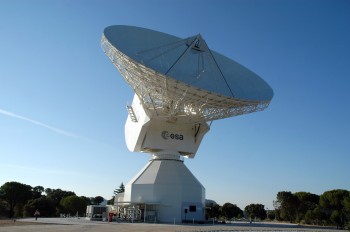As we described last Friday, the operations team at ESOC are able to continue monitoring radio signals from Venus Express; they can ‘see’ the X-band carrier wave being transmitted from the spacecraft’s high-gain antenna despite the fact that it is not pointed at Earth, although this, too, is steadily dropping off.
Today (Thursday, 15 Jan), VEX spacecraft operations engineer Rick Blake, at ESOC, sent in this update:
During the Cebreros tracking station pass for VEX yesterday, the carrier signal appears to have improved compared to the ‘short’ pass that we saw via Malargue station the day before. The pericentre passage prior to this pass was predicted to be at an altitude of 128.8 km, the subsequent pericentre passage is predicted to be at an altitude of 127.2 km.
Venus Express mission manager Patrick Martin says that the most recent (calculated, not observed) altitude of VEX is now below the lowest ever achieved during the aerobraking campaign, and that loss of signal will most likely occur in a matter of days rather than weeks.


Discussion: no comments